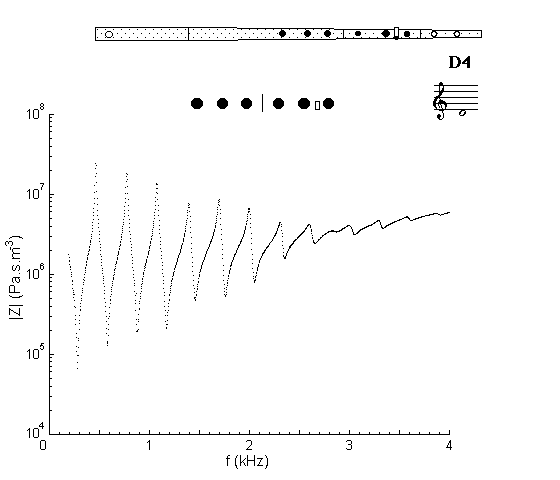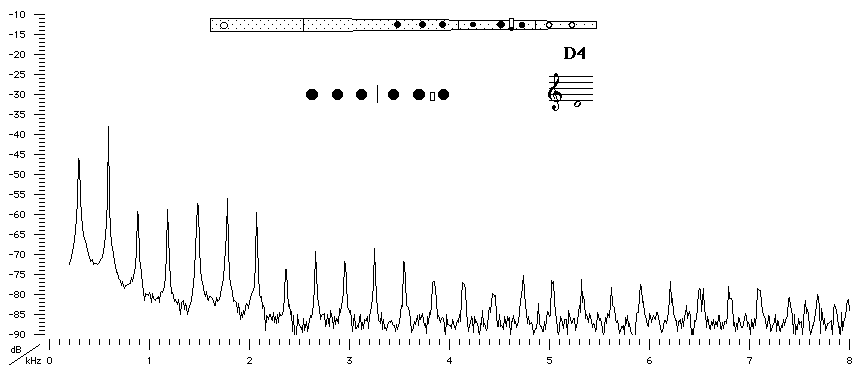| Acoustics of baroque, classical and modern flutes |
classical flute
|
D4 |

|
Acoustic and Fingering Schematic Non-specialist introduction
to acoustic impedance |
With two holes open, the filtering effect of the downstream holes is clear at frequencies above about 1.5 kHz. Compare this spectrum with more regular impedance spectrum for D4 on the classical instrument with a D foot. The regular, harmonically spaced minima in the latter spectrum allow greater power in the higher harmonics, and thus a brighter tone for this note.

Sound spectrum
of a classical flute with a C foot played using fingering for D4.
![]()
![]()
![]()
![]()
![]() You can hear D4
played by Geoffrey Collins.
You can hear D4
played by Geoffrey Collins.
| Acoustic measurements are available for these flutes - modern B, modern C, classical C, classical D, classical flared, baroque Sound clips are available for modern B, classical flared and baroque |
To compare flutes, it is easiest to open a separate browser window for each instrument. |